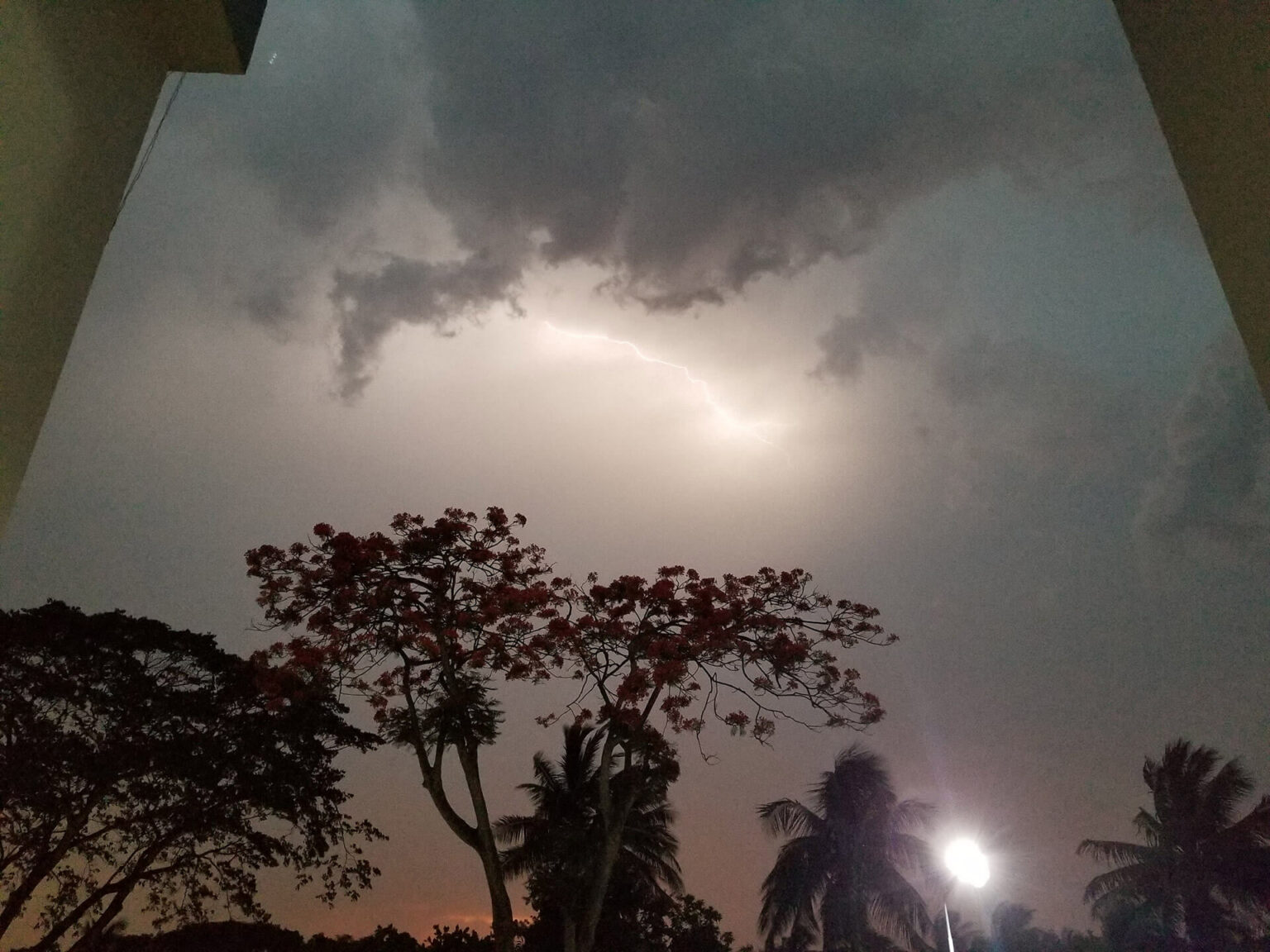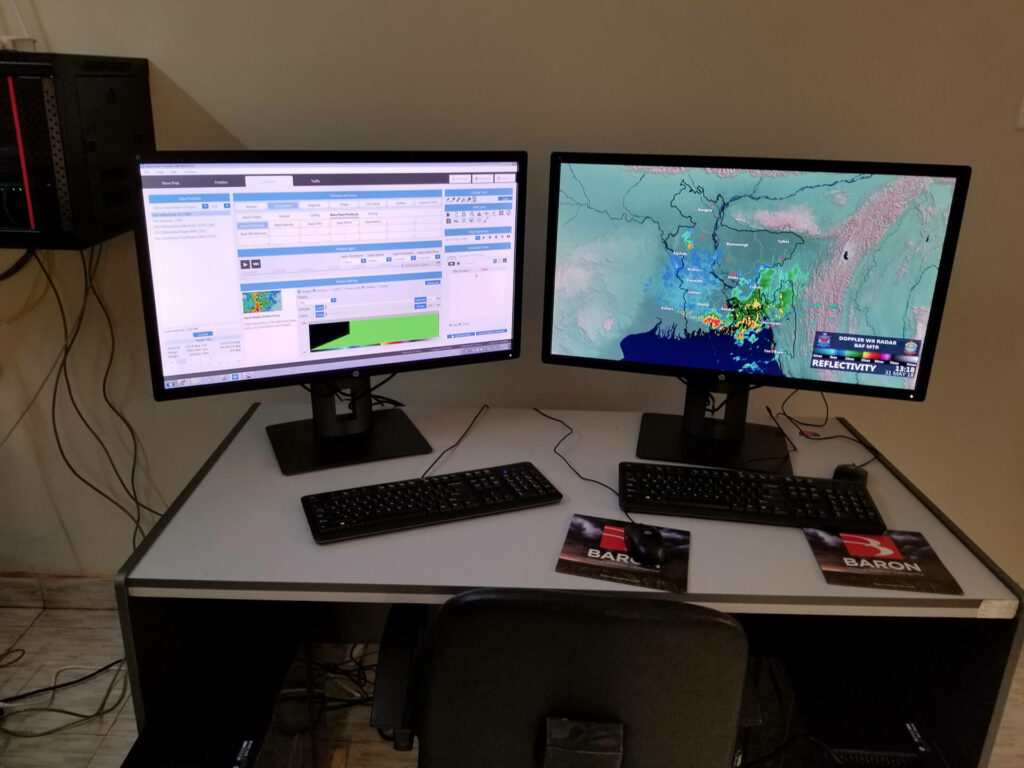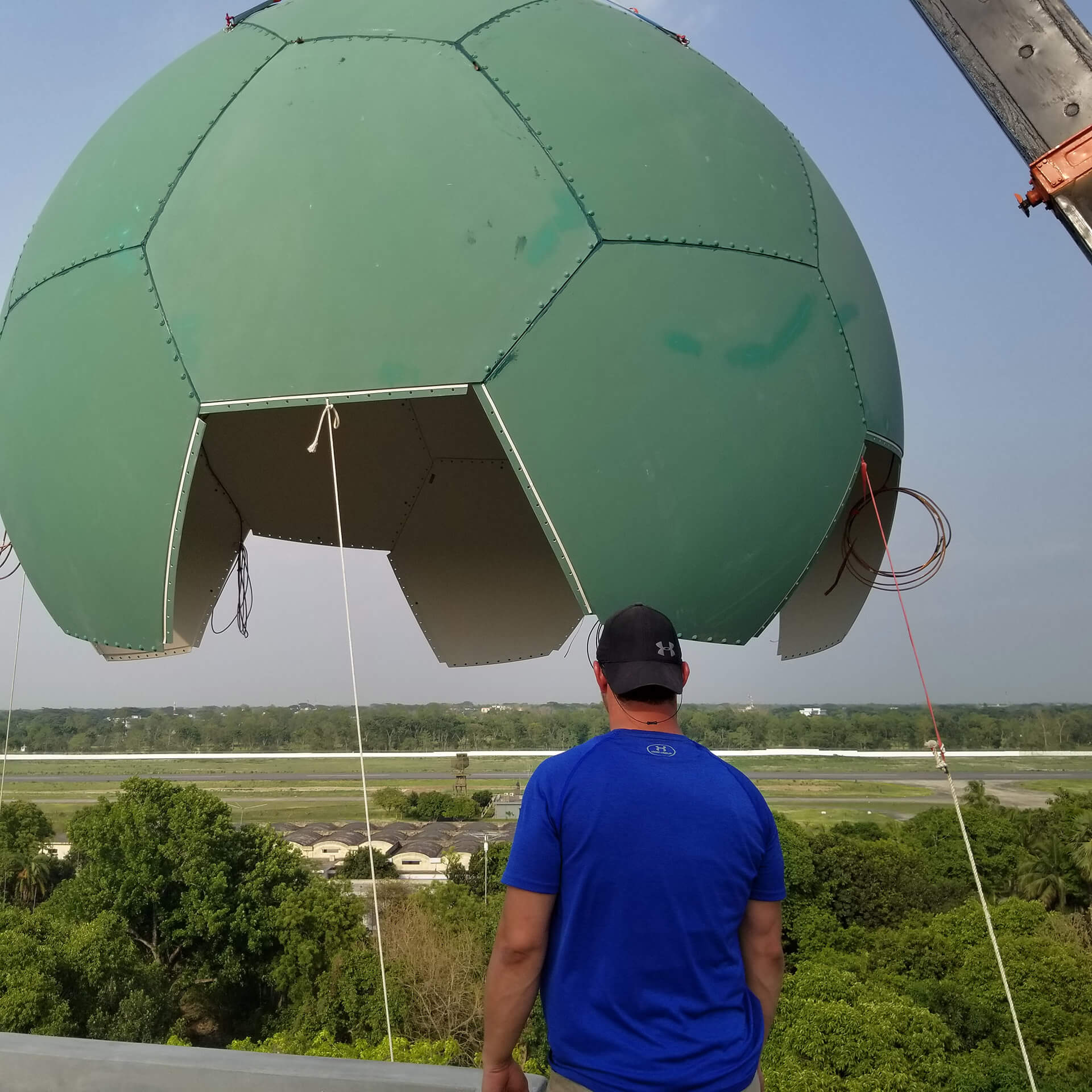في يونيو 2018، سلمت شركة بارون رادارًا مزدوج الاستقطاب على النطاق C بقدرة 350,000 واط إلى القوات الجوية البنغلاديشية، وهو الآن قيد العمل في القاعدة في جيسور. تهدف القوات الجوية إلى تعزيز وتحديث بنيتها التحتية الخاصة بالطقس، مما يساعد على ضمان سلامة الطيارين ونجاح تنفيذ المهام والتدريب على الطيران. في السابق، كانت بنغلاديش بحاجة إلى الاعتماد على مصادر بيانات خارجية لرصد الأرصاد الجوية.
وجاء التركيب بعد زيارة موظفي العمليات البنغلاديشيين وخبراء الأرصاد الجوية البنغلاديشيين لمقر البارون في هانتسفيل بولاية ألاسكا الأمريكية لمدة ثمانية أسابيع، حيث خضع الرادار لفحص شامل واختبار قبول المصنع الكامل (FAT).
يتألف الطقس في البلاد في المقام الأول من العواصف الرعدية التي تنتج البرق والتي يمكن أن تسبب مشاكل في السلامة والإزعاج للقوات الجوية وتدريباتها. "يقول مات ساري، خبير الأرصاد الجوية في خدمة عملاء البارون الذي شارك بشكل كبير في نشاط وتركيب النظام الجديد: "العواصف الحملية هي خطر شائع في بنغلاديش. "كان سلاح الجو في بنغلاديش يبحث عن رادار يمكنه الكشف بدقة عن الطقس القاسي، حتى إذا اقتربت عاصفة منتجة للبرق، يمكنهم تعديل مناطق تدريب الطيران وفقاً لذلك."

سيوفر رادار Baron Gen3 هذا لسلاح الجو العديد من الميزات التي ستساعد القوات الجوية وطياريها في سلامة الطيران والوعي الظرفي. وقال ساري: "إنه رادار شامل يناسب احتياجات القوات الجوية البنغلاديشية على أفضل وجه". وسيقوم النظام أيضًا بإجراء معايرة آلية جديدة حاصلة على براءة اختراع، ومعايرة شعاعية آلية جديدة من الجيل التالي من الرادارات مع تقنية CLEAN-AP™، التي تم توفيرها من خلال ترخيص تقني حصري مع جامعة أوكلاهوما.
سيتم عرض البيانات الناتجة من الرادار من خلال أنظمة بارون لينكس المتعددة، سواء داخل الرادار أو في مبنى فرقة الأرصاد الجوية. وسيكون لديهم أيضاً شاشة عرض للتوعية بالحالة. "شاشة عرض الوعي الظرفي هي صورة رادارية حالية لبنغلاديش. إنها شاشة لينكس أخرى. سيتم استخدام هذه الشاشة للطيارين للنظر ومعرفة نوع الطقس في المنطقة. سيتمكنون من طرح الأسئلة قبل التحليق في المناطق المختلفة."

يمكن للقوات الجوية تتبع العواصف بدقة باستخدام الرادار لتعزيز سلامة الطيران والوعي الظرفي. "قال ساري، الذي أمضى أسبوعين في بنغلاديش للمساعدة في الانتقال إلى الرادار الجديد ومواصلة التدريب اللازم لتشغيله: "يمكنك أن ترى تأثير التكنولوجيا الجديدة على الفور. "يمكننا الآن توفير تكنولوجيا الطقس الدقيقة لتحسين سلامتهم ووعيهم بالطقس القاسي."

